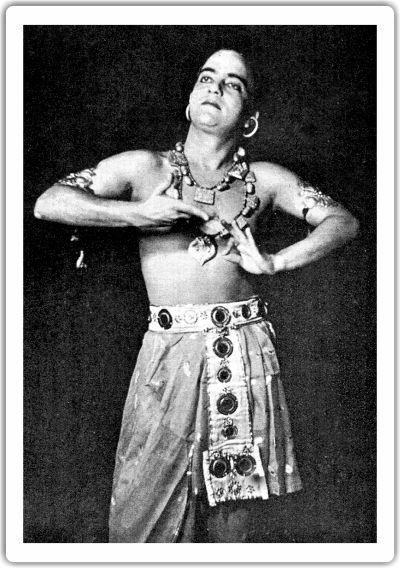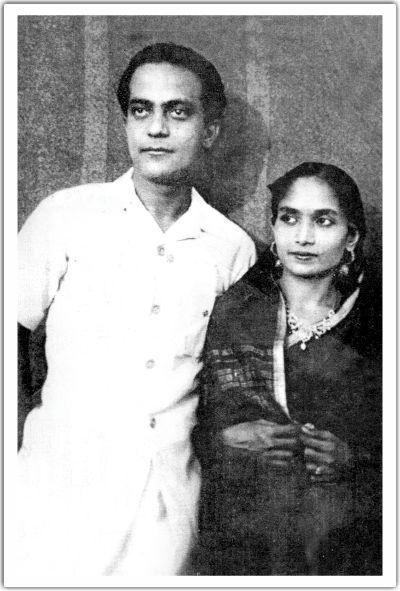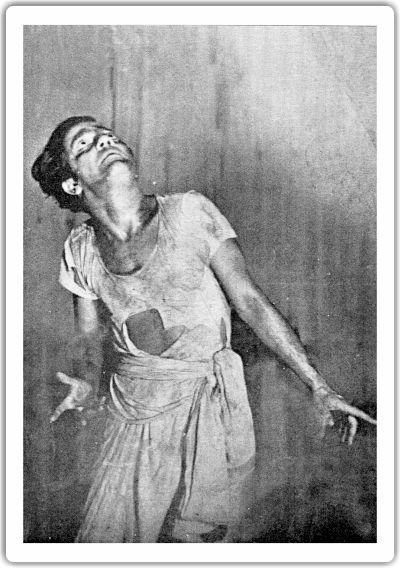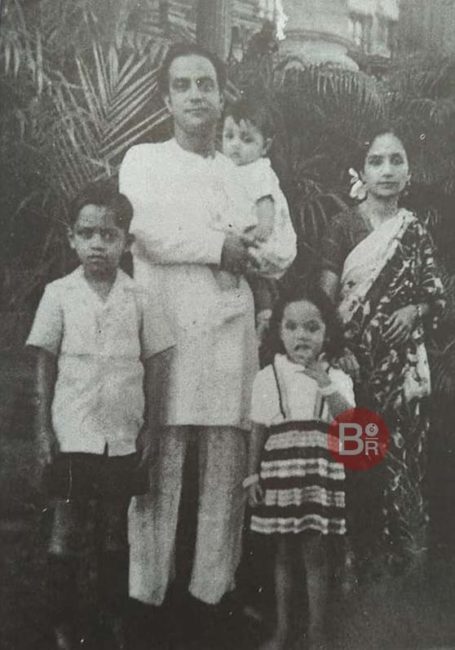Author: Shamsuddoza Sajen
With stretching arms, pointed toes and emotive facial expressions, dance speaks of the language of human emotions as the music flows into the body. Its gracefulness and vigour portray the human condition in compelling ways that both the dancer and audience can relate to and understand.
Modern dance in the conservative Muslim community in Bengal was pioneered and popularised by a man called Bulbul Chowdhury. The grace and dexterity of his movements, eloquent choreography and, most importantly, his commitment to make dance a people’s art, placed him as one of the greatest performance artists of our time.

Bulbul Chowdhury’s dancing career started with the performance of a Chatak Dance, choreographed by him, at a school function. After passing matriculation in 1934, he went to study in Kolkata. He passed IA from Presidency College (1936), BA from Scottish Church College (1938) and MA from Calcutta University (1943). During his stay in Kolkata he came in contact with well-known dancers such as Uday Shankar and Sadhana Bose which gave him an opportunity to nurture his dancing talent.
In 1936, Bulbul Chowdhury performed with Sadhana Bose in Rabindranath Tagore’s dance drama Kach O Devajani which made him quite popular. At this performance, he starred as Bulbul Chowdhury since at that time Muslims were discouraged in performance arts, particularly in dance. His original name was Rashid Ahmed Chowdhury.
In his short life, just 35 years, he created a unique style of dance by enriching it with deeper meaning and wider forms. Bulbul Chowdhury wrote and choreographed over 80 dance dramas. Among those Abhimanyu, Indrashabha, Sapure, Kabi O Bashonta, Maru Sangeet, Fashal Utshab, Bhabaghure, Jiban O Mrityu, Shiv O Parboti, Ajanta Jagaran, Arjun, Kalbaishakhi, Hafizer Swapno,Anarkali, Iran-er Panthashalay and Lest We Forget earned him rare success.

Bulbul’s uniqueness in dance style is marked by two prominent features. He was a master of mingling dance styles. He brought in the essence of popular myths and legends, folk tales, and history as the theme of his dance dramas. Initially he was inspired by legendary dancer Uday Shankar in incorporating Hindu myths and tales in his performances. But to attract Muslim audiences he started fusing Muslim myths and legends with Indian dance forms. He also adapted elements of traditional Islamic dance forms such as Turkish Sufi dance. This dramatic shift was evident in his famous works such as Iran-er Panthashalay, Sohrab O Rustam and Anarkali. It helped change conservative attitudes of the Muslims in Bengal towards dance and make this performance art respectable and popular among them. It also appealed to the secular imagination of his contemporaries that dance has the potential to transcend the narrow religious divide.
Another important hallmark of Bulbul’s works was his preference for a simple form of dance which could be easily appreciated by ordinary spectators. To Bulbul, dance was a source of entertainment for the common people which helped express their hopes and fears, love and sorrow, and agonies and pathos. Instead of pursuing sumptuous themes and rigorous patterns of classical dance he chose the everyday life of common people and folk elements and created an entirely novel series of dance dramas, rich in conception and vivid in expression. There came out Rupak – the dance of hilly unsophisticated tribal girls passing by; the Fisherman – a folk dance portraying the success and disappointments of the fishermen; Fashal Utshab – festive exuberance of the sturdy peasants at the rich harvest; and many others.
He depicted the sufferings of teeming millions during the man-made famine of 1943 in Lest We Forget. It created a sensation throughout the world and earned the regard of one of the ‘best ballets’ ever produced. After the performance of Lest We Forget in London, the Manchester Guardian wrote, “He [Bulbul] is an innovator and has given Indian dancing [a] turn which is quite new….The political ballet of the Bengal famine of 1943 which staged last night was surprisingly impressive. Contemporary themes are very difficult to render in terms of ballet. Anybody interested in the problem of how to do so should certainly see Bulbul.”

The De Rude Uan of Belgium appreciated, “Not one single modern ‘bourgeois’ theatre piece is so impressively true to life as is this dramatic dance Lest We Forget.”
Bulbul Chowdhury’s popularity survived the artificial division of geography enforced by Partition. He remained the busiest dancer in the sub-continent between 1942 and 1954. He and his troupe, Bulbul Chowdhury Dance Troupe, used to perform in all major cities of India and Pakistan. In 1953, they visited Europe, performing in Britain, Ireland, Holland, Belgium and France. The western audience was enchanted by the technical gifts and eloquent imagination of this oriental pride.
This multifaceted personality also proved his talent in literature through the well-known novel Prachi which portrayed tragic shifts in human lives imposed by the catastrophic events of WWII. It was published in 1942. He also penned quite a good number of short stories. His literary oeuvre bears his commitment to art as an aesthetic expression of the lived experience in a tumultuous time.

Bulbul Chowdhury met a premature death on May 17, 1954 in Kolkata suffering from cancer. But he left a glorious tradition to inspire generations of artists. After his death, Bulbul Academy of Fine Arts (BAFA) was established in Dhaka on May 17, 1955 to carry on his mission. This organisation has produced a school of dancers and musicians over the last six decades. In recognition of his contribution to dance Bulbul Chowdhury was honoured posthumously with ‘Pride of Performance’ by the Pakistan government in 1959 and ‘Independence Award’ by the Bangladesh government in 1984. But the best tribute to this dance maestro would be proper preservation of his innovations in dance and bringing them to the common people which is unfortunately sorely lacking in our times.

1 Comment
Lydia
July 22, 2020https://waterfallmagazine.com
Greetings! This is my first comment here so I just wanted to give a quick shout out and say
I really enjoy reading your articles. Can you recommend any other blogs/websites/forums that cover the same subjects?
Many thanks!